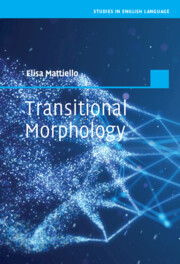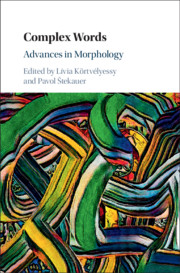Transitional Morphology
Combining Forms (CFs) are a major morphological phenomenon in Modern English, yet while they have been discussed in some morphological literature, no full-length study has been devoted to this topic so far. This pioneering book addresses that gap by providing a framework in which CFs are marked as distinct from their neighbouring categories such as abbreviations and blending. It splits CFs into four distinct categories – neoclassical (e.g. bio-therapy, zoo-logy), abbreviated (e.g. e-reader, econo-politics), secreted (e.g. oil-gate, computer-holic) and splinters (e.g. docu- from documentary in docudrama). It shows that the notion of CF spans a wide spectrum of processes, from regular composition to abbreviation, from blending to analogy, and schema. Modern and emerging English CFs are analysed by adopting a corpus-based approach, and measuring their realised, expanding, and potential productivity. Comprehensive yet accessible, it is essential reading for researchers and advanced students of morphology, English historical linguistics, corpus linguistics, and lexicography.
- Gives examples of an unexplored morphological category, Combing Forms (CFs), and categorises its subtypes
- Introduces the main morphological discussions around the topic, providing different viewpoints and opinions of leading scholars
- Provides a multitude of corpus data which can be used as a database for further investigations on specific CFs and novel combinations
Product details
December 2022Hardback
9781009168281
200 pages
235 × 158 × 19 mm
0.51kg
Available
Table of Contents
- 1. Introduction
- 2. Background of combining forms
- 3. Dataset and methodology
- 4. Neoclassical combining forms
- 5. Abbreviated combining forms
- 6. Secreted combining forms
- 7. Splinters or combining forms 'in the making'
- 8. Conclusions.



